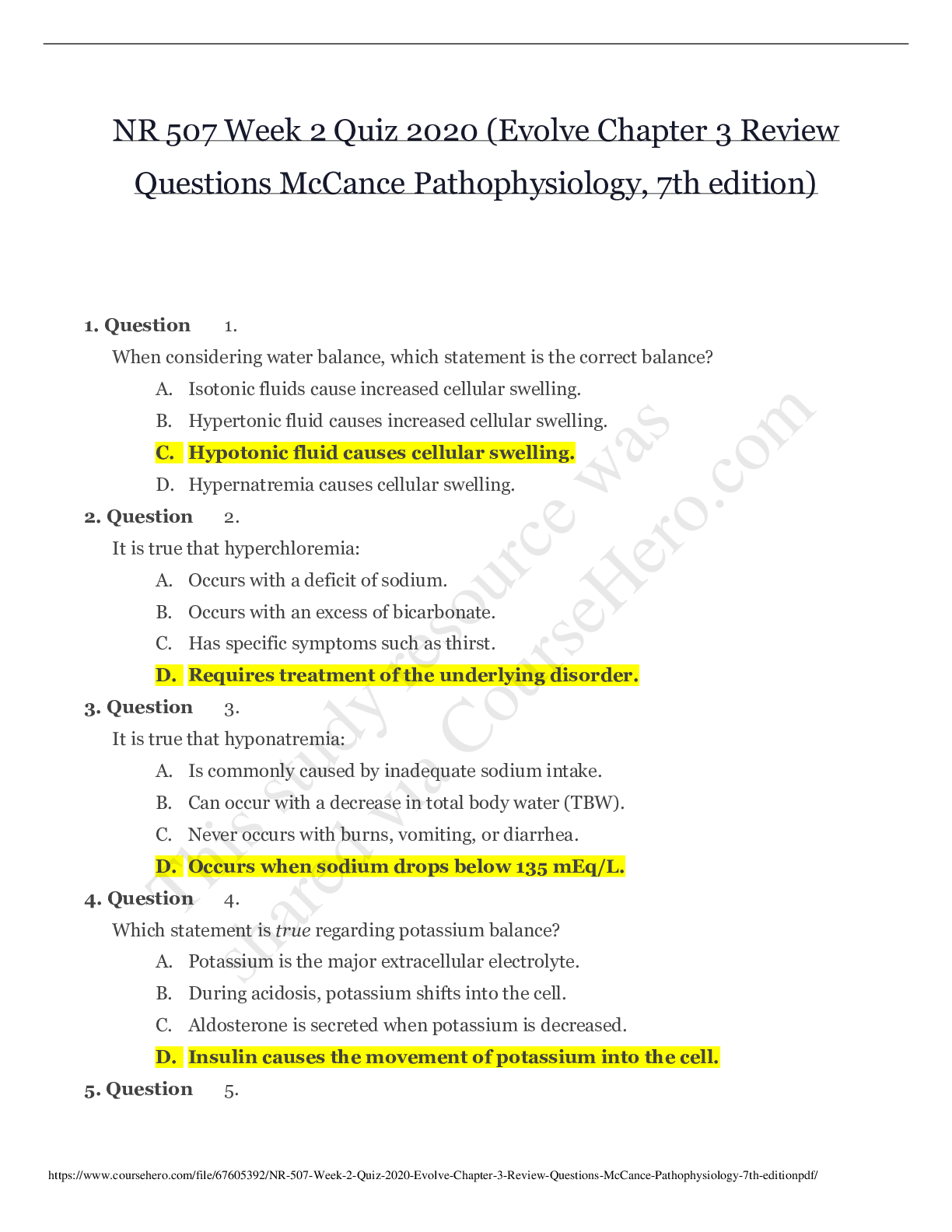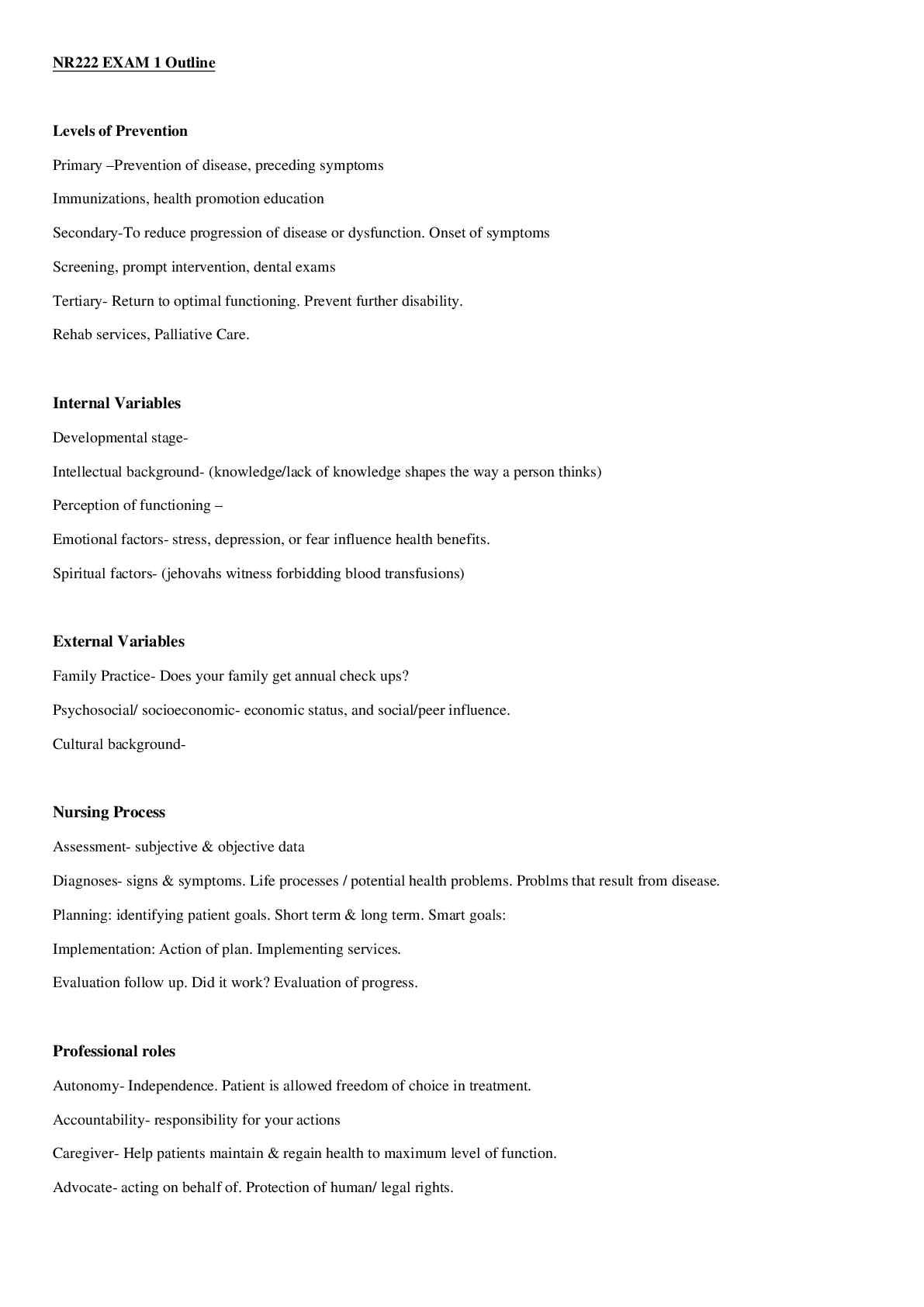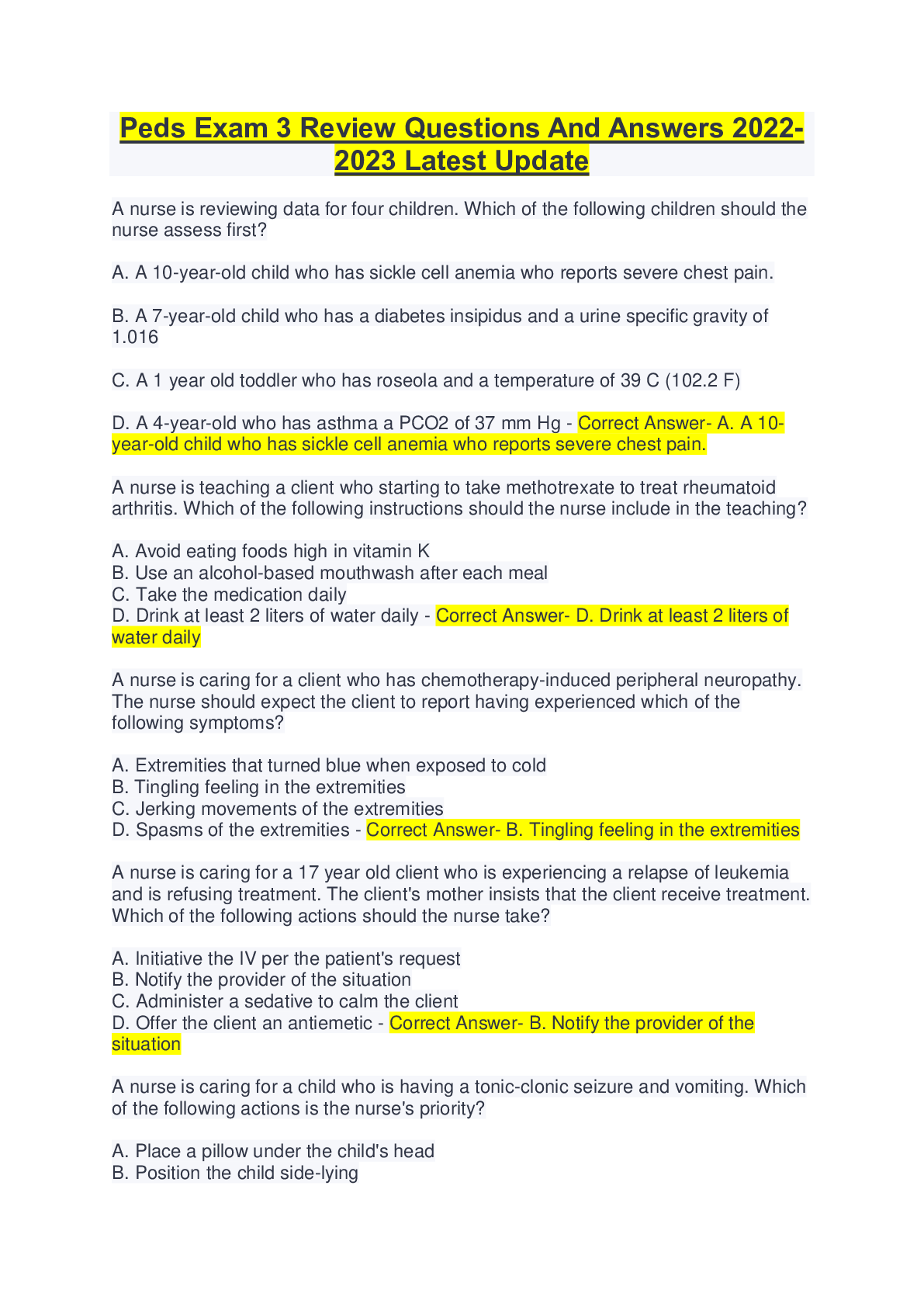Pharmacology Exam 3 Review Questions and Answers
Document Content and Description Below
A patient is being started on niacin (vitamin B3) to reduce triglyceride levels. The nurse is providing patient education and should include which adverse effects? (Select all that apply.) A. Facia... l flushing B. Gastric upset C. Constipation D. Hypoglycemia E. Itching Rationale: Adverse effects of nicotinic acid include intense flushing of the face, neck, and ears; itching; and GI upset (nausea, vomiting, and diarrhea). Constipation and hypoglycemia are not adverse effects of niacin therapy. 2. Which of the following would be a contraindication to taking a HMG-COA Reductase Inhibitor? ---- statin A. Allergy to peanuts B. Smoke 1 pack of cigarettes per day C. Takes fish oil D. Hypersensitivity reaction to fungal byproducts 3. After the patient's anginal pain is relieved, he says to the nurse, “That nitroglycerin (Nitrostat) works great. How does it do that?” What is the nurse's best response? A. “Nitroglycerin (Nitrostat) decreases the amount of oxygen needed by the heart to function.” B. “Nitroglycerin (Nitrostat) makes the coronary arteries narrower.” C. “Nitroglycerin (Nitrostat) promotes growth of new, smaller arteries to supply oxygen to the heart.” D. “Nitroglycerin (Nitrostat) increases afterload.” 4. The nurse teaches the patient taking sublingual nitroglycerin (Nitrostat) to avoid what? A. Exercise 2 B. Erectile dysfunction medications C. Milk products D. Synthetic fabrics 5. When planning client care the nurse recognizes what client is at greatest risk of developing coronary artery disease? A. 32-year-old Asian American with total cholesterol of 120 mg/dL B. A 62-year-old white American with total cholesterol of 260 mg/dL C. A 48-year-old African American with total cholesterol of 198 mg/dL D. A 26-year-old Native American with total cholesterol of 150 mg/dL Rationale: highest risk due to age and cholesterol level 6. The nurse is preparing to administer sublingual nitroglycerin (Nitrostat) to a client for the first time and warns that the client may experience what right after administration? A. Nervousness or paresthesia B. Throbbing headache or dizziness C. Drowsiness or blurred vision D. Tinnitus or diplopia Rationale: it’s a vasodilator these are adverse effects of nitroglycerin 7. Your client has a history of severe liver failure, high lipid levels, pancreatitis and gallstones. Which medication would the nurse expect the health care provider to order for the client who cannot take fibrates or HMG-CoA reductase inhibitors? A. Niacin B. Nicotine C. Vitamin C D. Aspirin 8. An Asian client comes to the clinic. Upon assessment, the nurse notes a slight yellow tint to the skin and sclera, edema, and hepatomegaly. The drug history reveals that the client has been 3 taking rosuvastatin (Crestor) for 6 months. The nurse is concerned, because rosuvastatin has been shown to do what? A. Cause renal and pancreatic toxicity specifically in Asian clients B. Cause renal failure C. Create myoglobin in the urine D. Reach levels twice as high in Asians as in Caucasians, resulting in a greater chance of hepatotoxicity Rationale: Rosuvastatin reaches abnormally high levels in people of Asian heritage. Consequently, hepatotoxicity may occur more often in Asian patients because of the high level of the drug in the blood. Rosuvastatin does not cause renal or pancreatic toxicity. Rosuvastatin does not cause renal failure. Rosuvastatin does not create myoglobin in the urine. 9. A client visits the clinic and receives a new prescription for a HMG-COA reductase inhibitor. Which statement about this class of drugs made by the nurse during patient education would be inappropriate? A. “Statins reduce the risk of stroke.” B. “You should come into the clinic for liver enzymes in 1 month.” C. “Statins reduce the risk of coronary events in people with normal LDL levels.” D. “You should maintain a healthy lifestyle and avoid high-fat foods.” Rationale: Baseline liver enzyme tests should be done before a patient starts taking an HMGCOA reductase inhibitor. They should be measured again in 6 to 12 months unless the patient has poor liver function, in which case the tests are indicated every 3 months. Statins do reduce the risk of stroke and coronary events in people with normal LDL levels. Maintaining a healthy lifestyle is important, as is avoiding high-fat foods. 10. A client presents to the clinic with complaints of muscle aches, muscle pain, and weakness. Upon review of the individual’s medications, the nurse notes that the client is concurrently taking gemfibrozil (Lopid) and atorvastatin (Lipitor). The nurse should assess the client for the development of: A. migraines. B. hypothyroidism. C. myopathy. 4 D. heart failure. Rationale: When gemfibrozil and a statin are taken concurrently, the risk of myopathy is increased more than with either agent alone. Migraines, hypothyroidism, and heart failure are not drug-to-drug interactions. 11. A client taking gemfibrozil (Lopid) and rosuvastatin (Crestor) concurrently begins to complain of muscle....................................................................................CONTINUED [Show More]
Last updated: 2 years ago
Preview 1 out of 19 pages

Buy this document to get the full access instantly
Instant Download Access after purchase
Buy NowInstant download
We Accept:

Reviews( 0 )
$16.00
Can't find what you want? Try our AI powered Search
Document information
Connected school, study & course
About the document
Uploaded On
Mar 29, 2022
Number of pages
19
Written in
Additional information
This document has been written for:
Uploaded
Mar 29, 2022
Downloads
0
Views
162

























